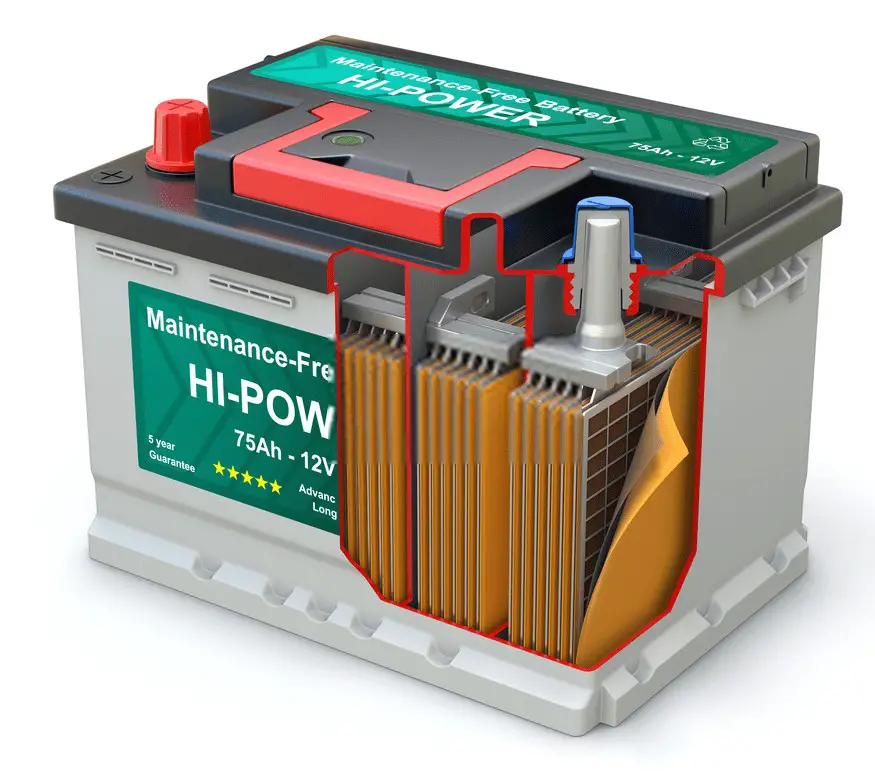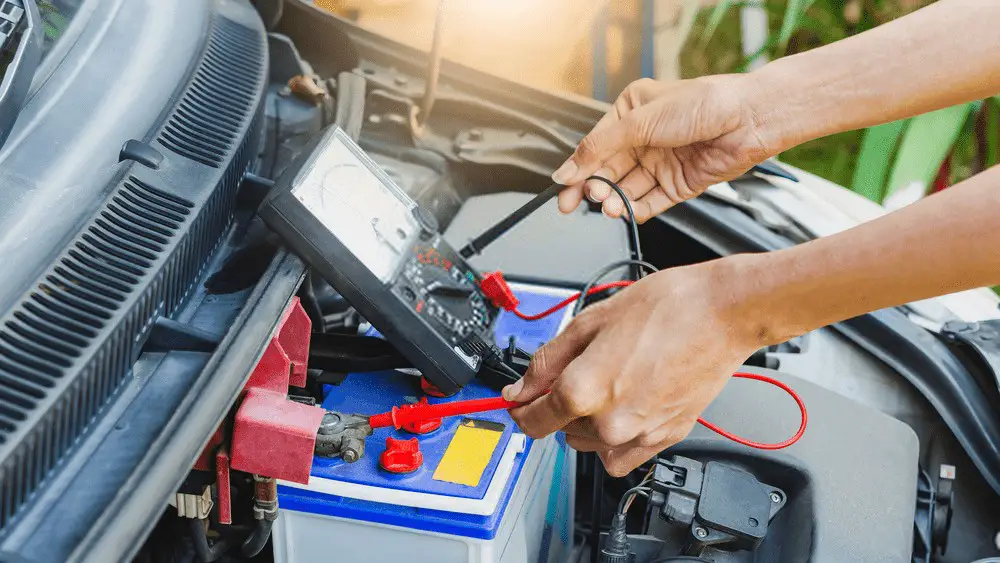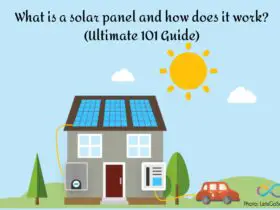Just like any other device or machine, your car also needs a battery to get enough power for proper functioning. Car battery powers its engine, radio, lights, and many other parts, but how it does so? Follow along as we uncover the concepts involved in automotive battery systems and how actually it works.
What’s a Battery?

A battery is simply a device that converts chemical energy into electricity. Basically, a battery is made of cells that contain the actual energy. Cells store chemical energy and convert it into electrical energy when needed. This simple underlying principle is used in almost all types of batteries.
“Related article: Electric Car Batteries – Types, Lifespan, Maintenance and More”
How does a Car Battery work?
Lead-acid (a group of batteries) batteries are used by the vast majority of cars. These batteries fall into the SLI class which stands for “Starting, Lighting, Ignition”. This simply means that SLI batteries not only power the car’s starter motor but also the lighting and ignition systems of the car. A short burst of energy powers the car’s engine and its accessories, right after this small burst the necessary power for the car is supplied by the alternator.

Here is the chemistry involved in car batteries:
- Typically, the SLI battery is composed of 6 cells, each cell delivers 2 volts of electromotive force. These 6 cells are laid out in a series connection, which supplies a total output of 12 volts.
- Each cell of the battery is made of two plates: one is made of lead dioxide and the other of lead.
- The plates of the cells are submerged in Sulfuric Acid (H2SO4) electrolyte solution which acts as a catalyst and triggers a chemical reaction between the plates.
- A reaction is triggered on the lead dioxide plate, causing it to produce ions and Lead Sulfate.
- The ions then react with the adjacent plate and produce Hydrogen and Lead Sulfate.
- In the resulting chemical reaction; electrons are produced which race around the cell’s plates and generate electricity.
- The chemical reaction happening inside the battery is entirely reversible. Supplying current to the battery at the right voltage will cause the lead and lead dioxide to form on the plates again (restore back to prior state), and this way you can reuse the battery.
In addition to this 12v battery, an electric car also has a lithium-ion battery pack. The electric vehicle’s battery pack provides the required electrical energy to power its motor.
Summary
To sum up, when the battery discharges, the acid reacts with the materials of the plates, changing their surface to lead sulfate. When the battery is recharged, the chemical reaction is reversed: the lead sulfate reforms into lead dioxide and lead. With the plates restored back to their original state, the process may now be repeated.
Over time, the battery’s efficiency will deplete, with most working optimally for about 3-4 years. In addition to this, modern electric cars have lithium-ion and lithium polymer batteries. Tesla recently promised that it will soon have a battery that lasts a million mile for its electric car.




![Types of Engineers and What they Do [Explained]](https://www.engineeringpassion.com/wp-content/uploads/2022/04/types-of-engineers-and-what-they-do-280x210.jpg)








Hi, Thanks for deeply explain how the car battery work. I am also an engineering student and searching for these topics. This article is very helpful for me. 🙂
Hi John! Glad to know that you’ve found this article useful 🙂